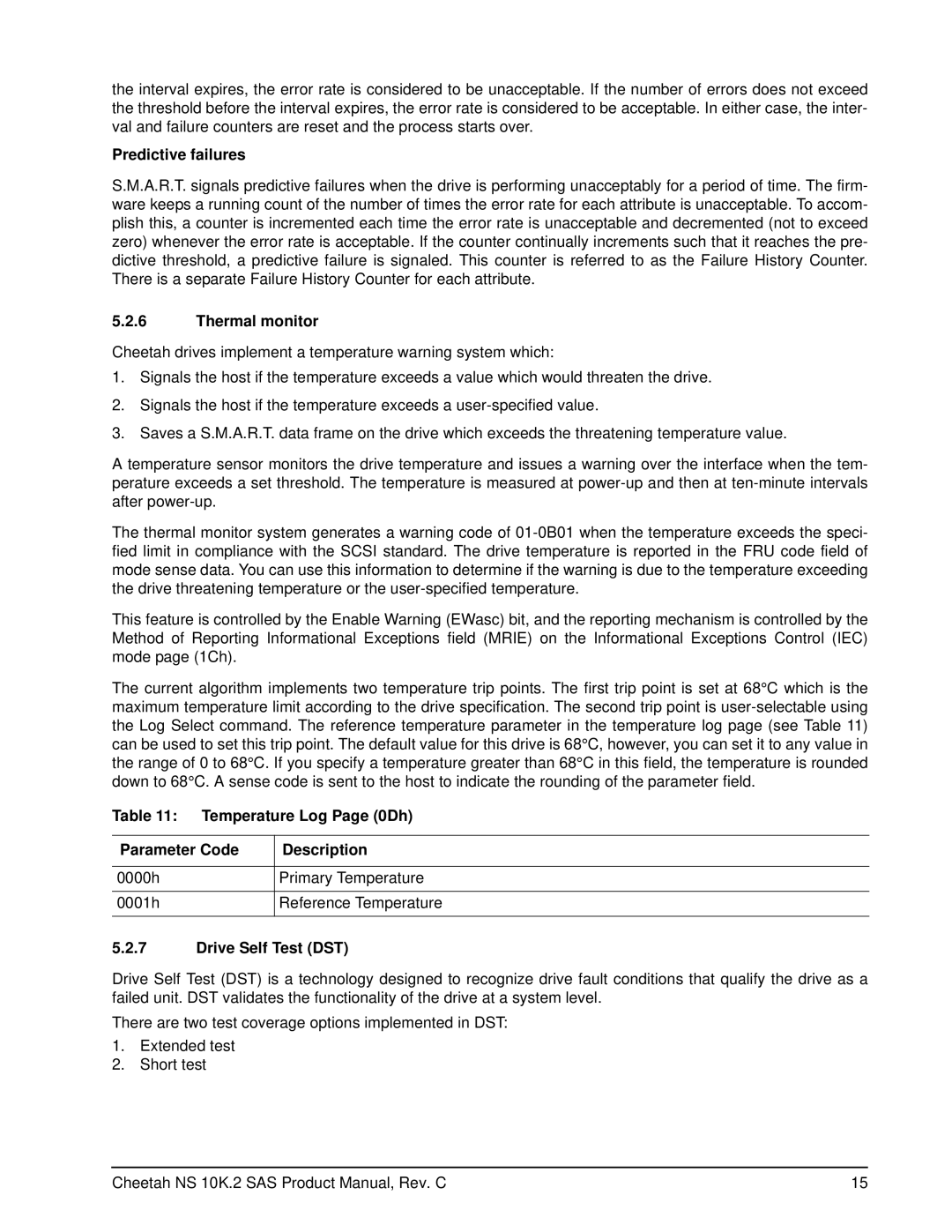the interval expires, the error rate is considered to be unacceptable. If the number of errors does not exceed the threshold before the interval expires, the error rate is considered to be acceptable. In either case, the inter- val and failure counters are reset and the process starts over.
Predictive failures
S.M.A.R.T. signals predictive failures when the drive is performing unacceptably for a period of time. The firm- ware keeps a running count of the number of times the error rate for each attribute is unacceptable. To accom- plish this, a counter is incremented each time the error rate is unacceptable and decremented (not to exceed zero) whenever the error rate is acceptable. If the counter continually increments such that it reaches the pre- dictive threshold, a predictive failure is signaled. This counter is referred to as the Failure History Counter. There is a separate Failure History Counter for each attribute.
5.2.6Thermal monitor
Cheetah drives implement a temperature warning system which:
1.Signals the host if the temperature exceeds a value which would threaten the drive.
2.Signals the host if the temperature exceeds a
3.Saves a S.M.A.R.T. data frame on the drive which exceeds the threatening temperature value.
A temperature sensor monitors the drive temperature and issues a warning over the interface when the tem- perature exceeds a set threshold. The temperature is measured at
The thermal monitor system generates a warning code of
This feature is controlled by the Enable Warning (EWasc) bit, and the reporting mechanism is controlled by the Method of Reporting Informational Exceptions field (MRIE) on the Informational Exceptions Control (IEC) mode page (1Ch).
The current algorithm implements two temperature trip points. The first trip point is set at 68°C which is the maximum temperature limit according to the drive specification. The second trip point is
Table 11: Temperature Log Page (0Dh)
Parameter Code | Description |
|
|
0000h | Primary Temperature |
|
|
0001h | Reference Temperature |
|
|
5.2.7Drive Self Test (DST)
Drive Self Test (DST) is a technology designed to recognize drive fault conditions that qualify the drive as a failed unit. DST validates the functionality of the drive at a system level.
There are two test coverage options implemented in DST:
1.Extended test
2.Short test
Cheetah NS 10K.2 SAS Product Manual, Rev. C | 15 |
